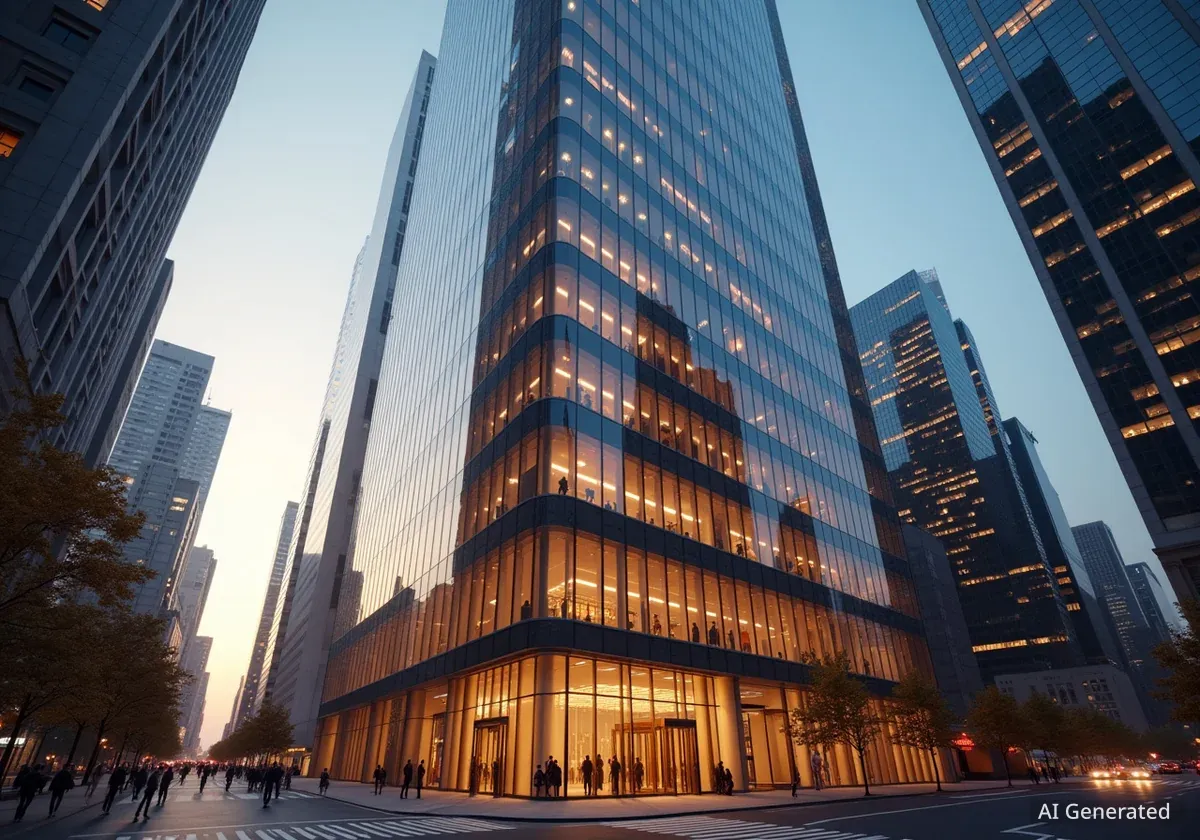Britain's competition regulator has launched an in-depth investigation into the proposed $3.7 billion merger of visual content giants Getty Images and Shutterstock. The move follows an initial review that raised significant concerns about the deal's potential impact on the UK market.
The Competition and Markets Authority (CMA) announced on Monday that it would escalate its scrutiny, citing worries that the combination of the two major U.S. firms could harm British businesses and consumers through higher prices and reduced quality for stock and editorial images.
Key Takeaways
- The UK's Competition and Markets Authority (CMA) has moved to a more detailed, in-depth investigation of the Getty-Shutterstock deal.
- The proposed merger is valued at $3.7 billion and would create a dominant force in the visual content market.
- Regulators are concerned the deal could lead to higher prices, worse terms, and lower quality for UK customers.
- An initial package of remedies offered by the companies was deemed insufficient to address competition concerns.
- The CMA has a deadline of April 16 to issue its final decision on the merger.
Investigation Escalated Over Competition Fears
The CMA has officially moved its review of the Getty-Shutterstock merger to a Phase 2 investigation. This is a more comprehensive and detailed stage of scrutiny reserved for mergers that regulators believe could substantially reduce competition within a specific market.
The decision came after a preliminary inquiry identified potential negative outcomes for the UK. The regulator stated that combining two of the leading suppliers of stock photos, illustrations, videos, and music could leave customers with fewer viable choices. This lack of competition, the CMA fears, could directly result in increased costs and poorer service.
The primary concern is that the merged entity would have too much market power. Businesses across the United Kingdom, from major media corporations and advertising agencies to small design studios and independent publishers, rely heavily on these platforms for visual content.
Deal at a Glance
- Acquirer: Getty Images
- Target: Shutterstock
- Value: $3.7 billion
- Status: Under in-depth investigation by UK's CMA
- Also Under Review By: U.S. Department of Justice
Proposed Remedies Fall Short
In an attempt to avoid the more intensive investigation, Getty and Shutterstock presented the CMA with what was described as a "complex package of remedies." These proposals were designed to proactively address the competition concerns raised during the initial review.
However, the regulator concluded that the offered solutions did not fully resolve the potential issues. The CMA's statement indicated that the remedies were insufficient, prompting the decision to escalate the inquiry for a more thorough examination of the deal's long-term market implications.
Both Getty Images and Shutterstock have publicly responded to the CMA's decision. Getty expressed disappointment but affirmed its commitment to the acquisition, stating it will continue to work with regulators to secure approval.
Shutterstock also confirmed its dedication to the merger, noting that Getty had offered "comprehensive remedies" in an effort to avert the further review.
An Industry Facing Technological Disruption
The proposed merger, first announced in January, is taking place against a backdrop of significant technological change. The rise of sophisticated artificial intelligence (AI) image generators presents a growing challenge to the traditional business models of human-created stock photography.
The AI Factor
Platforms that can generate high-quality, custom images from simple text prompts are offering a new, often cheaper, alternative to licensing pre-existing photos. This disruptive force is reshaping the visual content industry, putting pressure on established players like Getty and Shutterstock to consolidate and adapt their strategies to remain competitive.
While the companies see the merger as a way to strengthen their position in this evolving landscape, regulators are focused on the immediate impact on the existing market for licensed content. The CMA's investigation will need to weigh the current competitive landscape against future industry shifts.
What Happens Next
With the investigation now in its second phase, the CMA will conduct a more detailed analysis, gathering evidence from the companies involved, their competitors, and their customers. The regulator has set a statutory deadline of April 16 to publish its final report and decision.
The potential outcomes of the investigation are varied:
- Clearance: The deal could be approved without any conditions if the CMA finds no substantial lessening of competition.
- Remedies: The CMA could approve the merger subject to certain conditions, such as forcing the companies to sell off specific parts of their business to maintain a competitive balance.
- Blockage: The regulator could ultimately decide to block the merger entirely if it concludes that no set of remedies can adequately protect UK market competition.
The decision will be closely watched by the creative and media industries in the UK, as it will directly shape the future of the visual content marketplace. The U.S. Department of Justice is also conducting its own review of the deal, adding another layer of regulatory scrutiny for the two companies.




